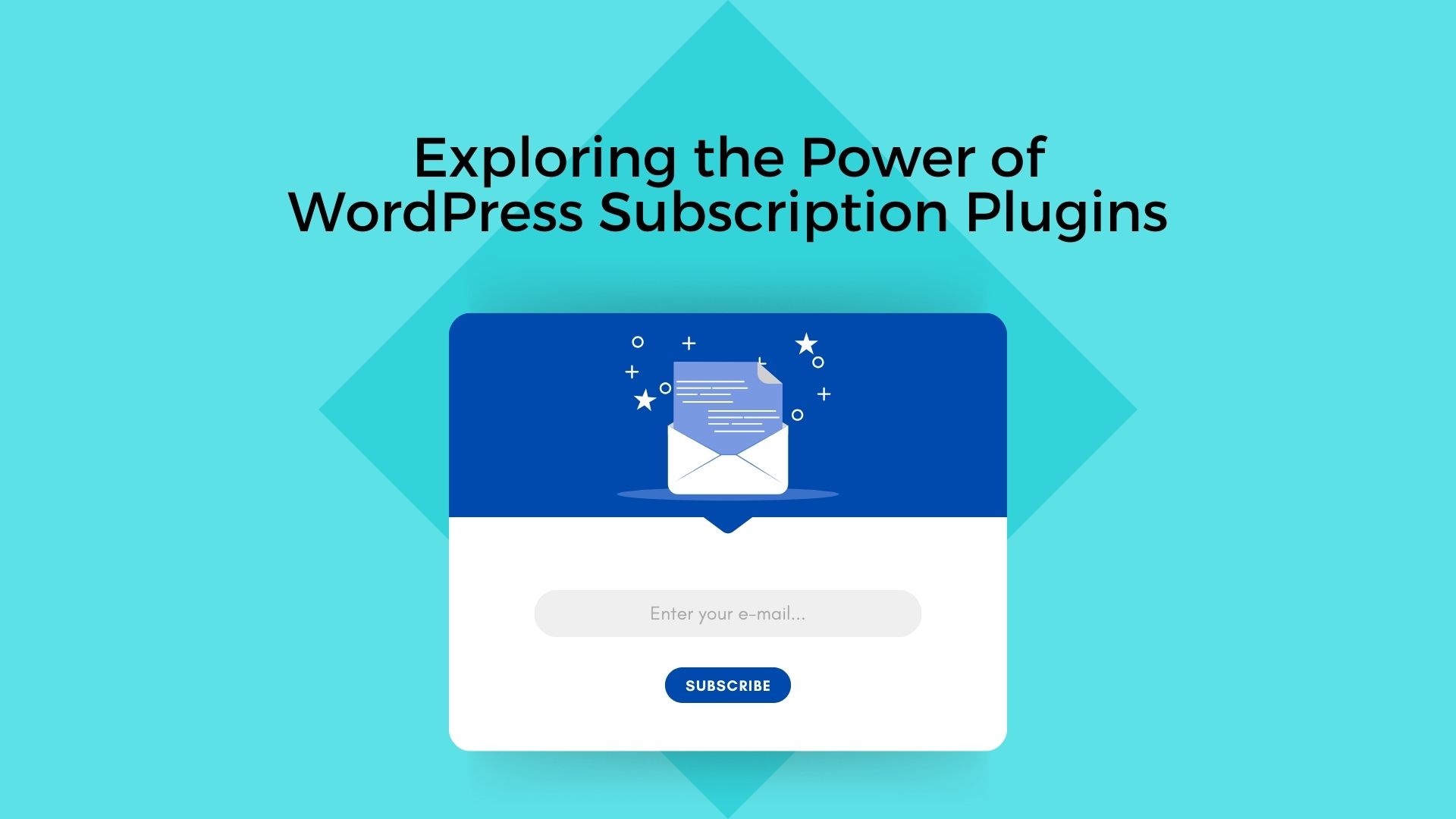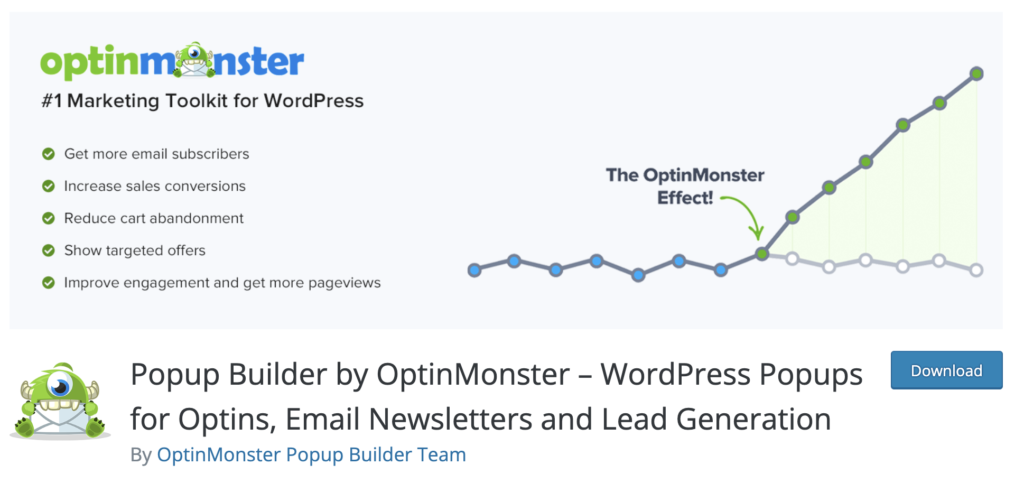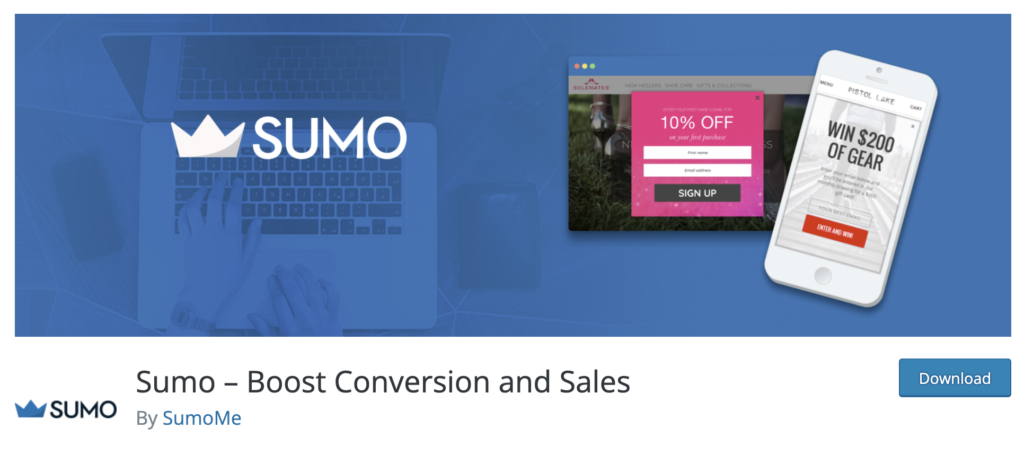
Exploring the Power of WordPress Subscription Plugins: Boosting Your Website’s Engagement
Maintaining an online presence is vital for businesses and bloggers in today’s digital age. One of the key elements of a successful website is engaging with your audience effectively. WordPress subscription plugins have emerged as a powerful tool to achieve this goal. In this article, we’ll dive deep into WordPress subscription plugins, exploring their benefits, functionality, and how they can enhance user engagement.
Why Are WordPress Subscription Plugins Essential?
Before we dive deeper into the intricacies of WordPress subscription plugins, let’s take a moment to truly comprehend why these plugins are indispensable for the flourishing of your website.
1. Building a Dedicated Audience
At the very core of every successful website lies cultivating a dedicated and engaged audience. These are the individuals who not only visit your website but also eagerly anticipate your updates, eagerly consume your content, and, most importantly, advocate for your brand. Subscription plugins serve as the initial gateway to establishing this loyal following. By integrating these plugins into your website, you can collect email addresses directly from your visitors. This opens up a direct line of communication, allowing you to forge a lasting connection with your audience. Think of it as building a community of like-minded individuals genuinely interested in what you offer.
2. Boosting User Engagement
Engaging your audience is not a one-time effort but an ongoing process. This is where the true potential of WordPress subscription plugins comes into play. Once successfully amassed a pool of subscribers, you hold the key to their inboxes. You can continually provide them with personalized content, updates, and valuable insights. Imagine being able to keep your audience in the loop about your latest blog posts, upcoming products, exclusive offers, or breaking news within your niche. Subscription plugins empower you to do precisely that. By sending tailored messages to your subscribers, you keep them engaged and informed, ultimately solidifying your position as a trusted source of information and enhancing their overall user experience.
WordPress subscription plugins serve as the cornerstone of audience development and engagement strategies. They empower you to connect with your audience personally, nurture their loyalty, and continuously deliver content that resonates with their interests and needs. This dynamic interaction makes a website a digital presence and a thriving, evolving community.
Types of WordPress Subscription Plugins
There is a multitude of subscription plugins available for WordPress. Here are some of the most popular ones:
OptinMonster
OptinMonster is a renowned and versatile WordPress plugin that has earned its reputation as a lead generation and conversion optimization powerhouse. Its user-friendly interface and robust features make it an indispensable tool for website owners and marketers looking to capture leads, boost user engagement, and drive conversions. In this section, we’ll explore the key advantages and disadvantages of using the OptinMonster plugin to help you make an informed decision about integrating it into your WordPress website.
Pros of OptinMonster Plugin
- Ease of Use: OptinMonster is celebrated for its intuitive and user-friendly interface. Even if you’re not tech-savvy, you can quickly create stunning and effective opt-in forms, pop-ups, and other lead-generation elements without extensive coding knowledge.
- Diverse Form Types: OptinMonster offers many form types, including pop-ups, slide-ins, floating bars, and more. This versatility lets you choose the format that best suits your website’s design and audience’s preferences.
- Advanced Targeting: One of OptinMonster’s standout features is its advanced targeting options. You can display specific campaigns to different user segments based on location, device, referral source, and user behavior. This level of personalization enhances user engagement and conversion rates.
- Integration Compatibility: OptinMonster integrates with various email marketing platforms and customer relationship management (CRM) systems. This makes it easier to manage and nurture leads generated through your campaigns.
- A/B Testing: Optimizing your lead generation efforts is crucial, and OptinMonster simplifies this with built-in A/B testing. You can test different variations of your campaigns to identify what resonates best with your audience and continually improve your conversion rates.
Cons of OptinMonster Plugin
- Pricing: While OptinMonster offers a feature-rich free trial, its premium plans can be relatively expensive for smaller businesses and bloggers. Pricing is tiered, and the cost may increase as your website’s traffic and needs grow.
- Learning Curve: Although OptinMonster is user-friendly, mastering all its features and customization options may require time and effort. Beginners may find it overwhelming initially.
- Limited Analytics: While OptinMonster provides essential analytics and reporting, it may not offer the same in-depth insights as some dedicated analytics tools. Users seeking extensive data analysis may need to integrate additional analytics software.
- Performance Impact: Like any plugin, OptinMonster can somewhat affect your website’s performance. Optimization and monitoring are necessary to ensure your sites slow down your inclusion. OptinMonster is a powerful WordPress plugin that excels in lead generation and conversion optimization. Its ease of use, diverse form types, advanced targeting, integration compatibility, and A/B testing make it a valuable asset for businesses looking to grow their email lists and boost conversions. However, its pricing, learning curve, limited analytics, and potential performance impact should be considered when deciding whether it fits your website.
Mailchimp for WordPress
The Mailchimp for WordPress plugin is a powerful and widely-used tool that bridges the gap between your WordPress website and the popular email marketing platform, Mailchimp. It empowers website owners, bloggers, and businesses to seamlessly integrate their email marketing efforts with their WordPress sites. This integration offers many advantages, including collecting leads, sending targeted email campaigns, and tracking user engagement. In this section, we’ll delve into the key pros and cons of using the Mailchimp for WordPress plugin, helping you make an informed decision about its suitability for your website.
Pros of Mailchimp for WordPress Plugin
- Ease of Integration: The plugin simplifies the integration process between your WordPress site and Mailchimp, making it accessible to users with varying technical expertise.
- Seamless List Management: You can effortlessly sync your WordPress user database with Mailchimp lists, ensuring your email marketing efforts are always up-to-date.
- Customizable Forms: The plugin allows you to create and customize subscription forms to match your website’s design and branding, enhancing user experience.
- Targeted Campaigns: With Mailchimp’s segmentation and targeting features, you can send highly personalized email campaigns to specific user groups, maximizing engagement and conversion rates.
- Automation: Automate email sequences, welcome emails, and follow-up messages to nurture leads and maintain consistent communication with your subscribers.
- In-Depth Analytics: Mailchimp provides comprehensive analytics, allowing you to track the performance of your email campaigns, including open rates, click-through rates, and conversion metrics.
Cons of Mailchimp for WordPress Plugin
- Cost: While Mailchimp offers a free plan for limited users and emails, more extensive usage or advanced features may require a paid subscription, which can be costly for some businesses.
- Learning Curve: For beginners, configuring and optimizing the plugin’s advanced features might take time and effort.
- Limitations on Free Plan: The free plan limits the number of subscribers and emails you can send, which might not be sufficient for larger businesses or websites.
- Plugin Updates: As with any software, updating the Mailchimp for WordPress plugin is crucial to ensure compatibility and security. Failure to do so may lead to issues.
In conclusion, the Mailchimp for WordPress plugin is valuable for seamlessly integrating email marketing efforts with your WordPress site. Its ease of integration, list management capabilities, customizable forms, and advanced targeting features make it a strong choice for those looking to grow their subscriber list and engage their audience. However, users should be mindful of potential costs, the learning curve for advanced features, and the limitations of the free plan when considering its adoption for their website.
Sumo plugin
The Sumo plugin is a comprehensive suite of marketing tools designed to supercharge your website’s growth and engagement. It offers many features to help website owners, bloggers, and businesses capture leads, boost website traffic, and improve user engagement. Sumo’s user-friendly interface and robust functionality have made it popular among WordPress users. This section outlines the key pros and cons of using the Sumo plugin, helping you understand its value for your website.
Pros of Sumo Plugin
- Diverse Marketing Tools: Sumo offers a suite of marketing tools, including list-building pop-ups, welcome mats, share buttons, and more. This variety allows you to implement multiple strategies to engage your audience and capture leads effectively.
- User-Friendly Interface: Sumo’s intuitive and user-friendly interface makes it accessible to users of all skill levels. You can quickly set up and customize your marketing campaigns without extensive technical knowledge.
- Customizable Designs: The plugin provides a wide range of design options, enabling you to create visually appealing and on-brand pop-ups, forms, and share buttons that seamlessly integrate with your website’s design.
- A/B Testing: Sumo includes A/B testing capabilities, allowing you to experiment with different campaign designs and strategies to optimize conversion rates and engagement levels.
- Advanced Targeting: You can target specific user segments based on behavior, referral source, and user demographics, ensuring that your marketing efforts reach the right audience at the right time.
- Analytics and Insights: Sumo offers robust analytics and insights, providing valuable data on user interactions with your marketing campaigns and helping you refine your strategies.
Cons of Sumo Plugin
- Pricing: While Sumo offers a free plan with basic features, some of its more advanced functionality, such as advanced targeting and custom designs, may require a paid subscription. The cost may not be feasible for all users.
- Learning Curve: Despite its user-friendly interface, mastering Sumo’s features and customization options may take some time for beginners.
- Performance Impact: Like most plugins, Sumo can impact your website’s performance, particularly if you use multiple resource-intensive features simultaneously. Careful optimization may be necessary.
- Limited Features on the Free Plan: The free plan has limitations on the number of subscribers and emails, which may not be suitable for websites with substantial traffic or extensive marketing needs.
In conclusion, the Sumo plugin is a robust marketing toolset that offers a wide range of features to enhance lead generation, engagement, and website growth. Its user-friendly interface, customizable designs, A/B testing, and advanced targeting make it a valuable asset for those looking to optimize their online marketing efforts. However, potential users should consider the free plan’s pricing, learning curve, performance impact, and limitations when deciding if Sumo is the right fit for their website.
Convert Pro
Convert Pro is a powerful WordPress plugin that elevates your website’s conversion optimization efforts. It’s a tool for website owners, marketers, and businesses looking to boost lead generation, engage users, and drive conversions effectively. Convert Pro distinguishes itself with its user-friendly interface and a wealth of features tailored to enhance your website’s conversion rate. In this section, we’ll explore the key pros and cons of using the Convert Pro plugin, enabling you to make an informed decision about its suitability for your website.
Pros of Convert Pro Plugin
- Intuitive Interface: Convert Pro boasts an intuitive and easy-to-use interface, making it accessible to all skill levels. You can quickly create and customize conversion-focused elements without extensive technical expertise.
- Customizable Designs: The plugin offers a wide range of design options, allowing you to create visually appealing and branded opt-in forms, pop-ups, and call-to-action elements that seamlessly integrate with your website’s aesthetics.
- Advanced Targeting: Convert Pro provides advanced targeting and trigger options. You can display specific campaigns to different user segments based on behavior, demographics, referral source, and more, ensuring your messages reach the right audience at the right time.
- A/B Testing: A/B testing capabilities enable you to experiment with various campaign variations and strategies, helping you identify the most effective approaches for increasing conversions.
- Integration Compatibility: Convert Pro easily integrates with popular email marketing platforms and CRM systems, streamlining the management of leads generated through your campaigns.
- Exit Intent Technology: The plugin includes exit-intent technology, allowing you to display targeted messages to users who are about to leave your website, potentially converting abandoning visitors into leads.
Cons of Convert Pro Plugin
- Pricing: While Convert Pro offers a free trial, access to its full range of features may require a paid subscription. Pricing may vary, and the cost can be a factor for some users, especially for smaller websites.
- Learning Curve: For beginners, grasping Convert Pro’s features and customization options might take some time. The extensive array of features can be overwhelming initially.
- Performance Impact: Like most plugins, Convert Pro can impact your website’s performance, particularly if you use resource-intensive features extensively. Regular optimization is necessary.
- Limited Features on Free Trial: The free trial offers limited access to premium features, and some advanced options may only be available to paid users.
In summary, the Convert Pro plugin is a versatile conversion optimization tool designed to enhance lead generation and engagement on your website. Its intuitive interface, customizable designs, advanced targeting, A/B testing, and integration compatibility make it a compelling choice for those seeking to maximize conversions. However, potential users should consider the pricing, learning curve, performance impact, and limitations of the free trial when determining whether Convert Pro is the right fit for their website.
Setting Up a Subscription Plugin
Now, let’s walk through setting up a WordPress subscription plugin.
Choose the Right Plugin
Select a subscription plugin that aligns with your website’s goals and design preferences. Remember, the plugin’s appearance should match your site’s aesthetics.
Configure Subscription Forms
Customize your subscription forms with WordPress Contact Form Plugins to make them visually appealing and user-friendly. Ensure they are mobile-responsive for a seamless experience across all devices.
Offer Incentives
Encourage users to subscribe by providing incentives such as exclusive content, discounts, or freebies.
Leveraging Subscription Data
Once you’ve set up your WordPress subscription plugin and started collecting subscriber data, it’s time to put that information to good use.
Personalized Email Campaigns
Use subscriber data to send personalized email campaigns. Tailor your content to the interests and preferences of your audience.
Analyze User Behavior
Leverage analytics tools to track user behavior on your website. Understand what content resonates with your audience and refine your strategy accordingly.
Conclusion
WordPress subscription plugins are a game-changer for boosting user engagement and building a dedicated audience. By choosing the right plugin, customizing your subscription forms, and leveraging subscriber data effectively, you can take your website to the next level.
FAQs
1-Are WordPress subscription plugins compatible with all themes?
Most subscription plugins are designed to be compatible with a wide range of WordPress themes. However, checking the plugin’s documentation for specific compatibility details is essential.
2-Can I use multiple subscription plugins on my website?
While using multiple subscription plugins is technically possible, it’s not recommended. Doing so can lead to conflicts and result in a suboptimal user experience.
3-Are there free WordPress subscription plugins available?
Yes, many WordPress subscription plugins offer free versions with limited features. You can start with a free version and upgrade to a premium one as your website grows.
4-How often should I send emails to my subscribers?
The frequency of email communication with your subscribers depends on your content schedule and audience preferences. It’s best to establish a consistent schedule and stick to it.
5-Can I use subscription plugins for e-commerce websites?
Yes, subscription plugins can be used effectively on e-commerce websites to capture leads, promote products, and inform customers about sales and new arrivals.





